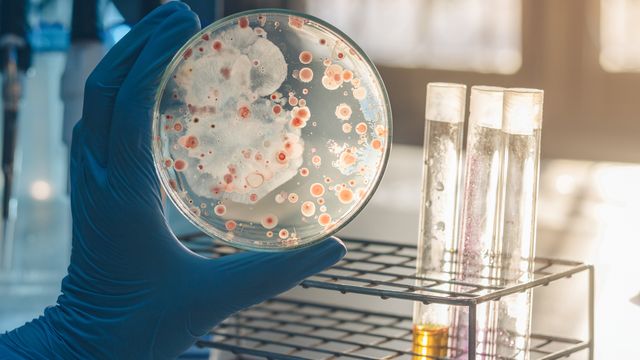Legionella pneumophila Culture Testing in Cooling Towers
In healthcare and clinical settings, Legionella pneumophila culture testing of cooling towers plays a pivotal role in ensuring public health and safety. Legionnaires’ disease, caused by the bacteria Legionella pneumophila, is a severe pneumonia that can result from exposure to aerosols containing these microorganisms. Cooling towers are known as significant sources for the dissemination of Legionella, especially under conditions where water temperatures are favorable (around 20-45°C).
The testing process involves collecting water samples from the cooling tower system and culturing them on selective media that supports the growth of Legionella pneumophila. The specimens are incubated under optimal conditions to allow the bacteria to proliferate, followed by identification through biochemical tests or genetic analysis.
Regulatory frameworks such as ISO 11731 and local guidelines mandate regular monitoring of cooling towers in healthcare facilities. This testing ensures compliance with safety standards, reduces the risk of infection, and mitigates potential health hazards for patients, staff, and visitors.
The first step involves selecting a suitable sampling point within the cooling tower system to ensure that the collected water is representative of the entire unit. After collection, samples are transported under controlled conditions to the laboratory where they undergo rigorous testing procedures.
Testing protocols follow strict guidelines set by international standards. The process typically includes:
- Sample collection from specified points in the cooling tower system
- Transportation of the sample under controlled temperature conditions
- Culture on selective media suitable for Legionella pneumophila growth
- Incubation at optimal temperatures (35°C ± 1°C) and observation period of up to 14 days
- Identification using biochemical tests or molecular techniques such as PCR
The results are reported in CFU/mL, providing a quantitative measure of Legionella pneumophila present in the water sample. This information is crucial for healthcare facilities to take appropriate corrective actions if contamination levels exceed acceptable limits.
Regular testing not only ensures compliance with health and safety regulations but also helps in identifying potential issues early on, thereby preventing outbreaks of Legionnaires’ disease. The ongoing monitoring program should be integrated into the facility’s overall infection control strategy.
In summary, Legionella pneumophila culture testing is essential for maintaining the highest standards of hygiene and safety in healthcare settings. By adhering to international standards and performing regular tests, facilities can significantly reduce the risk of Legionnaires’ disease outbreaks, ensuring a safer environment for all occupants.
Applied Standards
| Applied Standard | Description |
|---|---|
| ISO 11731:2008 | Guidelines for the detection and enumeration of Legionella pneumophila in water systems. |
| EN ISO 12910-2 | Methods for sampling, transport, storage, and processing of water samples containing legionellae. |
The testing procedure adheres to the standards set forth in ISO 11731:2008 and EN ISO 12910-2. These guidelines ensure that the testing process is consistent, reliable, and meets international best practices.
These standards provide detailed procedures for sample collection, transportation, and storage conditions to prevent contamination. They also specify the media types and incubation temperatures necessary for optimal growth of Legionella pneumophila. Compliance with these standards guarantees accurate results that can be relied upon for making informed decisions regarding facility hygiene and safety.
Scope and Methodology
| Scope | Description |
|---|---|
| Sample Collection | Selective points in the cooling tower system to ensure representative samples. |
| Culture Media | Selective media suitable for Legionella pneumophila growth and identification. |
| Incubation | Optimal temperature (35°C ± 1°C) with a recommended observation period of up to 14 days. |
| Identification | Biochemical tests or molecular techniques like PCR for definitive identification. |
The scope and methodology of Legionella pneumophila culture testing in cooling towers are meticulously designed to ensure accurate detection and quantification. The process begins with the selection of appropriate sampling points within the cooling tower system, ensuring that the collected water is representative of the entire unit.
Once collected, samples undergo rigorous testing using selective media that support the growth of Legionella pneumophila. Incubation at optimal temperatures (35°C ± 1°C) allows for the proliferation of the bacteria, making them detectable through subsequent identification steps. The recommended observation period is up to 14 days to capture all viable bacteria in the sample.
Biochemical tests or molecular techniques such as PCR are used for definitive identification of Legionella pneumophila. This ensures that only true positives are reported, providing reliable data for facility managers and compliance officers.
Compliance with these procedures is crucial not only to meet regulatory requirements but also to provide accurate and actionable information about the presence and levels of Legionella in the cooling tower system. Regular testing helps facilities maintain a safe environment by identifying potential risks early and implementing necessary corrective measures promptly.
Industry Applications
- Critical in healthcare facilities where patient safety is paramount
- Necessary for compliance with health and safety regulations
- Part of the overall infection control strategy to prevent outbreaks
- Supports risk assessment and mitigation efforts
- Aids in identifying potential sources of Legionella contamination
- Used by quality managers, compliance officers, R&D engineers, and procurement teams for decision-making
The application of Legionella pneumophila culture testing extends beyond healthcare facilities to other critical sectors such as hotels, resorts, cruise ships, and office buildings. In these environments, regular monitoring ensures that the cooling tower systems are safe from potential sources of infection.
For quality managers, this test is a key component in maintaining high standards of hygiene and safety within their facilities. Compliance officers rely on accurate results to ensure adherence to regulations and standards. R&D engineers can use the data obtained from these tests to improve design and operational procedures for cooling tower systems. Procurement teams benefit from knowing the contamination levels before purchasing new equipment or materials.
The importance of this testing cannot be overstated, especially in healthcare settings where patient safety is a top priority. By incorporating Legionella pneumophila culture testing into their routine maintenance protocols, facilities can significantly reduce the risk of Legionnaires’ disease outbreaks and provide a safer environment for everyone involved.





